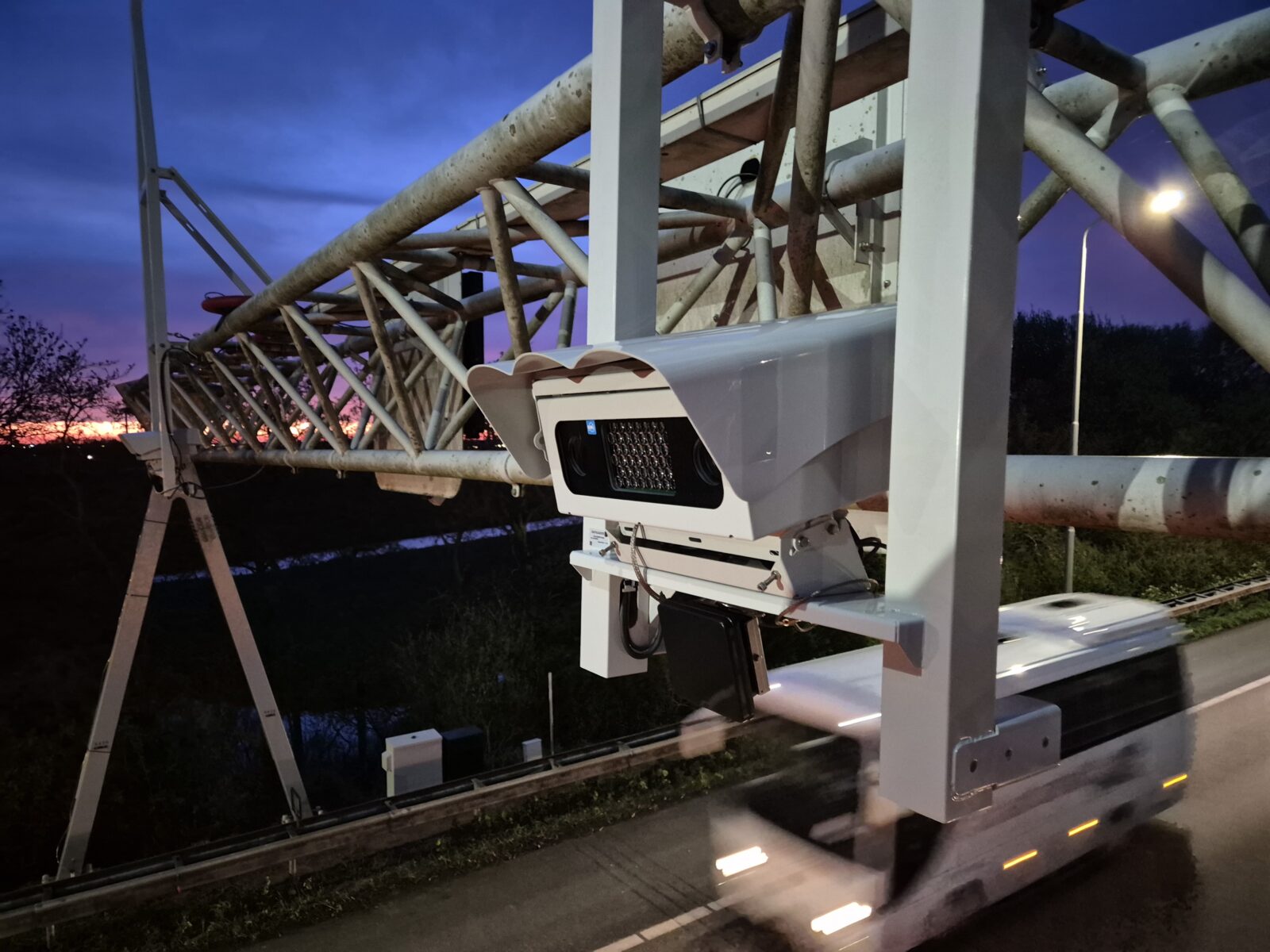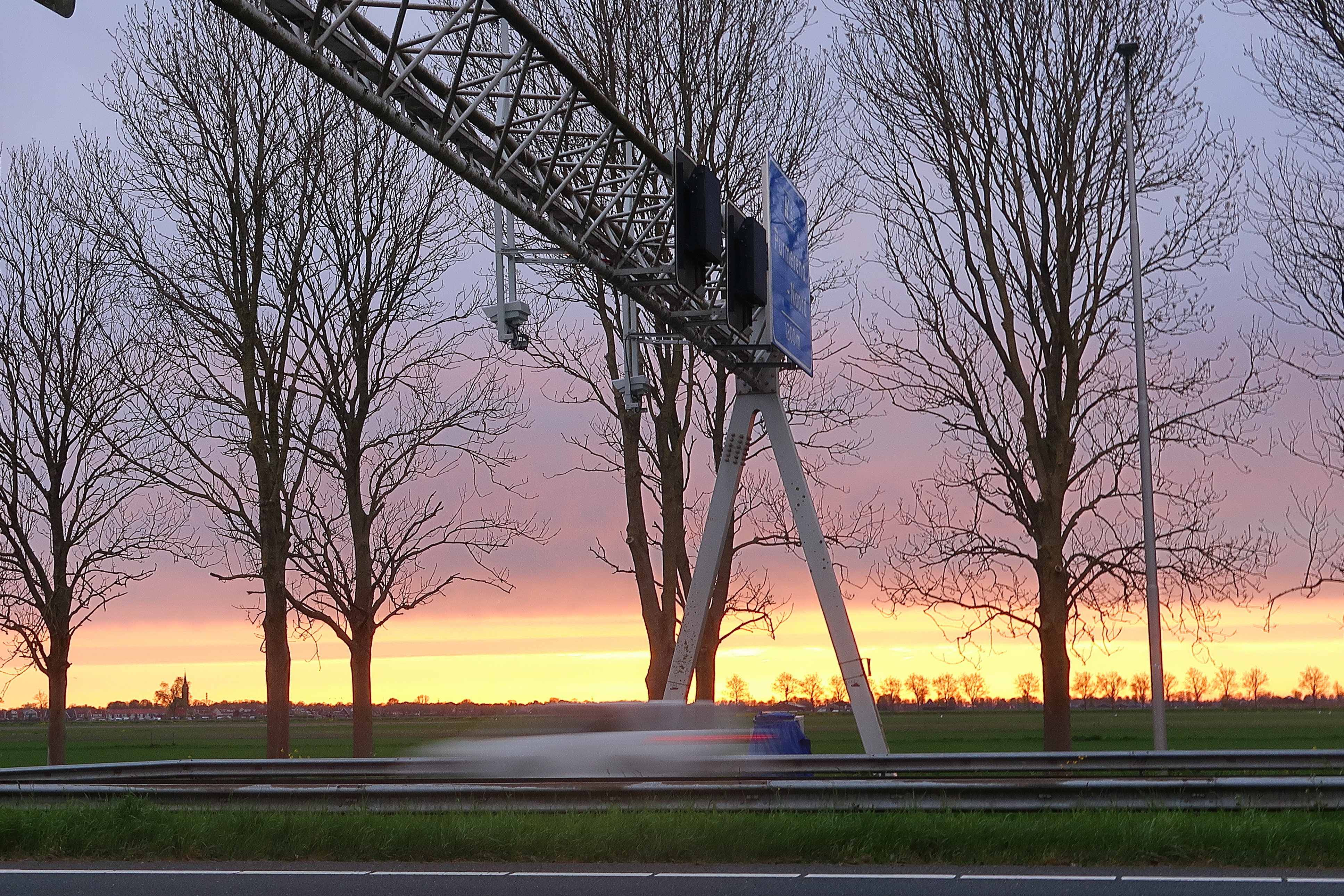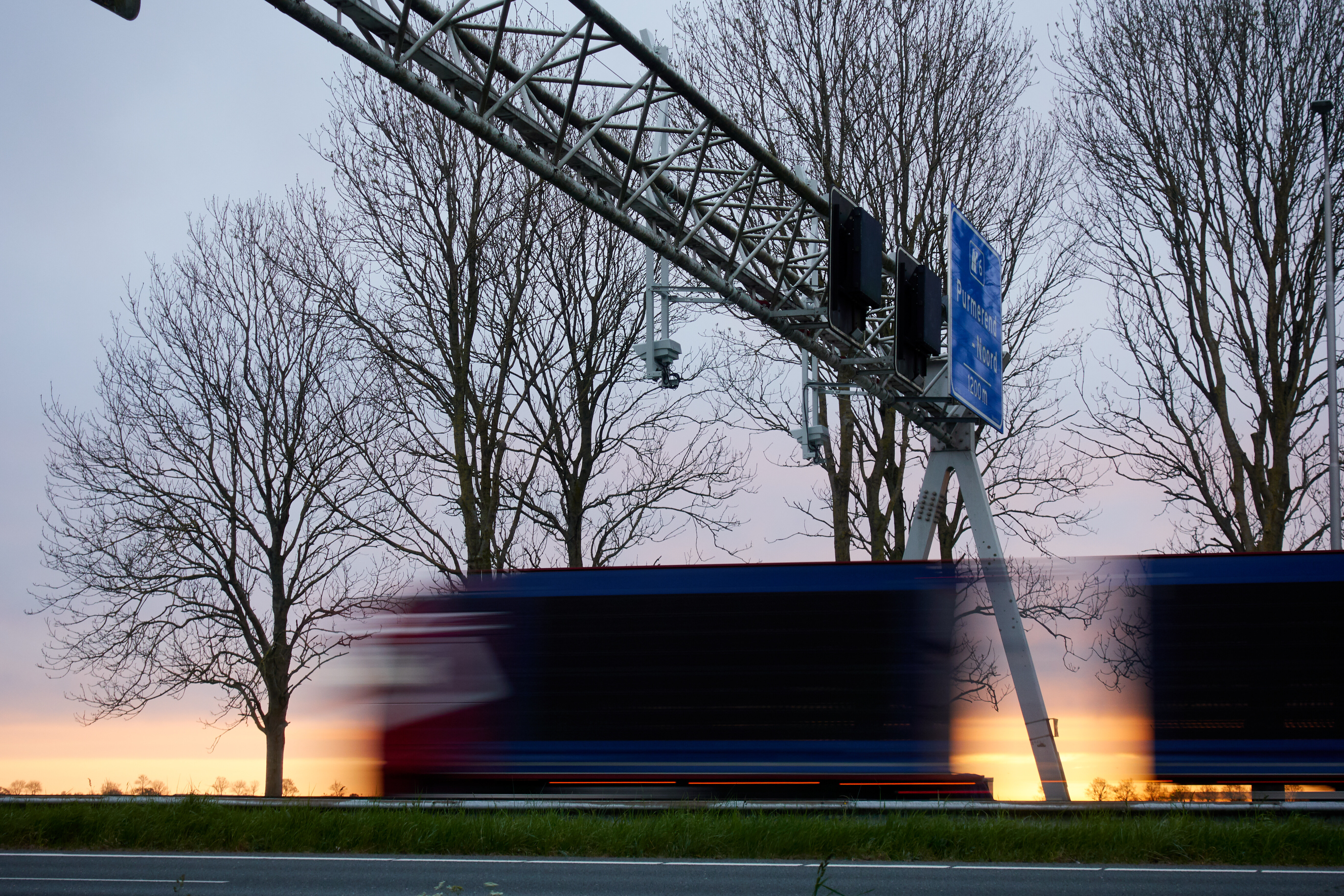
Unanimous academic verdict: Average speed enforcement improves road safety considerably
Average speed enforcement (ASE) involves technology that secures speed-limit compliance over longer road stretches. It was first introduced in the Netherlands in the late 1990s. It addresses several issues prevalent with traditional spot-speed enforcement methods and also has more support from the driving public. Compliance is high and road safety benefits, as unanimously concluded by academic research, are excellent. Countries have increasingly deployed average speed enforcement systems, initially, mostly on motorways, but now also in tunnels and on bridges, in work zones, and on national roads with few intersections. Some useful new ASE applications and its principles are discussed below.
Basics
Average speed enforcement (ASE), also called section control or point-to-point (P2P) speed enforcement, calculates speed by clocking the travel time of a vehicle over a predefined and accurately measured distance. It is thus time based and not related to actual speed measurement by radar or laser. License plates or characteristic ‘vehicle signatures’, or combinations thereof are registered by entry and exit gate cameras. These data are sent to a matching server which sorts, matches, and then compares the time stamps for each data pair linked to a monitored vehicle. The pairs which have been clocked at time intervals that are too short for the pre-measured distance, have thus been speeding. These images are then digitally marked and kept on the server as evidence based on which speeding violations are issued. It is important to know that images and time stamp records are taken of all passing vehicles, also of non-speeding one’s since, unlike with a spot speed camera, the ASE camera is ‘dumb’. The speeding decision is made by the matching server, not by the camera.
The use of ASE implies a legal and privacy related issue, especially in counties with driver liability that require a clear image of the driver at the time of the violation (e.g. Austria, Finland, Germany, Sweden and Switzerland). At the ASE entry point an image and time stamp of each vehicle is made, also of vehicles that were not speeding and will not speed throughout the monitored section. Only after taking another photo and time stamp the exit point a decision is made if the vehicle in question was speeding. This means a massive amount of data is collected of vehicles that were not speeding. The issue here is if a government has the right to collect images and data of ‘innocent vehicles and drivers’ that were not committing a violation. This issue in combination with the driver liability status of camera registered violations actually still (May 2025) prevents the full legal and operational introduction of ASE in Germany, which has very strict data protection and privacy regulations. Depending on the country, the data of non-violating vehicles on ASE servers has to be erased within a certain legally defined period. Law in the Netherlands demands immediate deletion of such data which is standard, but up to 28 days in special circumstances, e.g. in case of criminal investigations. In Austria, video and data recordings from surveillance systems, including those used for traffic enforcement, are typically retained for 14 days before being automatically deleted, unless these are needed for further investigation.
Since time is such a crucial variable in the average speed enforcement assessment process, two independent reference time measurements are used, mostly GPS time and network time (NTP). If the deviation between these two times is considered as too high, the violation will not be validated for further processing into a violation. If the time mismatch is more than just an isolated case, the enforcement system may be switched off entirely, depending on the requirements of the client (e.g. police or Ministry of the Interior).
ASE resolves the so-called ‘kangaroo effect
ASE resolves several issues that reduce the effectiveness of ordinary stand alone speed camera enforcement methods. With spot speed enforcement many drivers slow down or even brake to escape a fine and then sped up again after passing the camera. This is called the ‘kangaroo effect’. First this happened only at known speed camera locations, but now this information is routinely available to any driver for all locations via smartphone apps or satnav systems. In several countries it is legally required to use signage to indicate upcoming speed cameras. Braking or slowing down for speed cameras was mentioned as a cause for congestion or sometimes even crashes. This was blown up further by the anti-speed camera lobby. Depending on the road safety issue addressed by the speed camera, this sudden slowing and then speeding up behaviour, especially on motorways, potentially undermines the effectiveness of speed cameras. When entering an ASE section, sudden braking no longer has any effect, provided drivers are aware the camera is an ASE camera and not a spot speed camera. Here proper signage and publicly plays an important role. Thus, ASE is hard to circumvent.

The Effects of ASE
Another benefit of ASE is the fact that it enforces a speed regime over a long distance. To get the same effect in a best case scenario, this would require a sequence of many traditional spot speed cameras. ASE can be used in situations where spot speed cameras are not feasible, e.g. in tunnels, on bridges, in work zones where there are height, mounting or other practical restrictions or safety requirements. Moreover, the speed compliance rate in ASE sections is very high and this high compliance is contagious. Other drivers noting all vehicles driving at the same speed also comply and change their driving behaviour. Thus, it results in a very calm and steady flow of traffic with minimal speed differences between vehicles, less braking and traffic noise, reduced congestion and emissions and easier merges near junctions or ramps. This results in several benefits besides road safety. Based on the effects after installation of ASEs on 50 road sections the UK the RAC Foundation reports (*1): “The use of average speed cameras has been found, on average, to cut the number of crashes resulting in death or serious injury by more than a third.“ This is a net figure corrected for statistical aberrations and other variations. In the Netherlands, a 47% reduction in total collisions was observed on a motorway section after section control was implemented . In Nottinghamshire, UK, casualties and seriously injured figures dropped by an average of 65% across eleven roads that were equipped with section control (*2). In Austria, average speed enforcement in a tunnel reduced injury crashes by 33% and fatal and serious injuries by nearly 49% over two years (*3). A UK-wide review found a substantial and statistically significant reduction in injury collisions, especially those of higher severity, after average speed cameras were introduced (*4).
ASE leads to substantial reductions in the average and 85th percentile speeds, often bringing speeds at or below the posted limit. In the Netherlands, only 0.5% of vehicles were detected speeding after section control was introduced on a motorway (*5). For example, a study in Thailand found the 85th percentile speed dropped by up to 20 km/h after implementation (*6).
The fixed and operational costs of ASE systems has also dropped due to lower costs for components and processing power. The use of faster mobile communication instead of cabled networks also helped lower installation costs. Moreover, ASE systems are also highly cost-effective especially on the higher traffic motorways and national roads. Studies report favorable cost-benefit ratios for average speed enforcement e.g. with a ratio 5.3 in Austria (*7). The cost-effectiveness also was mentioned in comparison to traditional fixed spot-speed cameras in a study in Thailand (*8).
It should also be noted that road users prefer ASE to traditional types of automated enforcement since they will not be fined immediately when they overtake a truck or other slower vehicle and happen to speed at that particular point. This has resulted in a higher public acceptance for ASE compared to spot speed enforcement.

ASE applications
Besides tunnels, bridges, motorways and motorways ASE has recently found new application areas. In Peer in Belgium ASE is being implemented in a central city street with a speed limit of 30 km/h. The objective is to encourage cycling and force motorised traffic to slow down, or otherwise use other roads to bypass the central city.
Implemented both in Belgium and the Netherlands, are ASE applications that slow down traffic on undivided secondary roads, mostly with an 80 or 100 km/h speed regimes. These roads by nature not only have a much higher crash rate than motorways, but due to a lacking divider also register more serious crashes with high fatality rates. Such roads could offer places to park, petrol stations or intersections thus presenting opportunities to bypass ASE timing but still have the effect that most drivers will abide by the speed regime.
ASE applications are increasingly used to primarily reduce emissions and noise pollution from traffic, road safety is then an added benefit. Especially on motorways cutting through municipalities and metropolitan areas. Relevant examples are the A10 in Amsterdam and A13 in Rotterdam. A conflict between the Dutch minister of transport and the municipalities of Amsterdam and Rotterdam in 2014 was resolved when a judge ruled that municipalities have the right to determine the speed regimes on national motorways, when the quality of life of its residents is at stake.
Several ASE cameras can be networked, e.g. at larger scale in a metropolitan area (*9) or smaller scale in a school zone. If a vehicle moves through a zone delineated by an entry and exit camera too fast i.e. it is clocked too early at the exit camera a violation will be registered. It does not matter at which camera the vehicle entered the ASE zone, the distance between the entry and exit camera is automatically calculated by the system and used as reference against the clocked travel time.

Conclusion
Virtually all academic research consistently confirms that ASE systems deliver significant road safety benefits. ASE reduces both average vehicle speeds and the frequency and severity of road collisions, particularly on high-speed roads and motorways. They tend to create an even smooth traffic flow with few braking incidences and speed differences between vehicles. Thus ASE contributes to optimising the efficient use of infrastructure and to preventing traffic jams. The kangaroo-effect - braking for spot-speed cameras and then speeding up again - by itself bad for road safety, is also avoided with ASE.
The systems are also used to manage traffic and improve quality of life by reducing congestion, pollution and traffic noise.
These days successful ASE applications can also be found in cities and along secondary roads. Moreover, ASEs also enjoy greater public support from the driving public.
Finally, ASE systems are also known to be a very cost effective road safety intervention with high cost-benefit ratios. They are used on high traffic roads delivering consistent predictable road safety benefits over long distances.
Sources
- RAC Foundation ASE report (UK) –
http://www.racfoundation.org/research/safety/effectiveness-average-speed-cameras-great-britain - European Transport Safety Council (ETSC) –
https://archive.etsc.eu/documents/copy_of_copy_of_Speed%20Fact%20Sheet%205.pdf - European Commission, Directorate-General for Mobility and Transport –
https://road-safety.transport.ec.europa.eu/system/files/2021-07/speed_enforcement.pdf - Royal Society for the Prevention of Accidents (RoSPA) (UK)
https://www.rospa.com/siteassets/images/road-safety/road-safety-information/driver-safety/speeding/speed-cameras-factsheet-oct-23.pdf - European Transport Safety Council (ETSC) –
https://archive.etsc.eu/documents/copy_of_copy_of_Speed%20Fact%20Sheet%205.pdf - National Institute of Health, National Library of Medicine (US) –
https://pubmed.ncbi.nlm.nih.gov/38485373/ - European Transport Safety Council (ETSC) –
https://archive.etsc.eu/documents/copy_of_copy_of_Speed%20Fact%20Sheet%205.pdf - National Institute of Health, National Library of Medicine (US) –
https://pubmed.ncbi.nlm.nih.gov/38485373/ Birmingham City Council (UK) –
https://www.birmingham.gov.uk/news/article/6/average_speed_enforcement_ase_cameras_switched_on_today
Written by Philip J. Wijers, Director Government Affairs, Sensys Gatso Group
